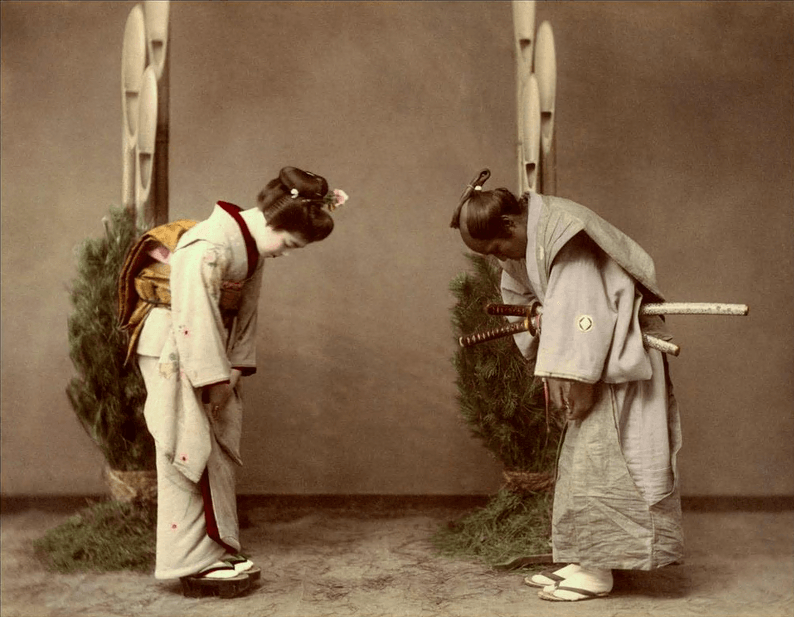Like this post? Help us by sharing it!
What does it take to master Japanese etiquette?
Japan has a reputation for being a land full of obscure customs and unwritten rules that can stump even the most seasoned traveller.
This adds to its charm, as visiting gives you a chance to absorb a new way of life, to delve into its idiosyncrasies and differences from the West. It’s these differences between Japanese culture and our own that make visiting so fascinating and eye-opening. All you can do is try to learn and make mistakes along the way.
Of course, it can be a bit of a maze for the uninitiated, especially because people will very rarely tell you when you’re doing something wrong (usually out of politeness and respect for your feelings).
But Japanese people will never expect you to know all the ins and outs of their culture, just as you wouldn’t expect someone from a foreign country to understand every vagary of yours.
The more you know, the better prepared you’ll be, however, so this article will introduce you to some of the most common cultural faux pas experienced by foreigners in Japan – giving you more than enough know-how to survive without embarrassing yourself, offending anyone or getting into hot water (unless you count onsens).
Got a flight to Japan tomorrow, and you’ve only got 5 minutes?
Here are our top 10 Japanese etiquette tips:
- Take off your shoes.
- Get naked in an onsen.
- Learn to bow.
- Don’t blow your nose.
- Table manners matter (use chopsticks correctly).
- You don’t need to tip.
- Never be late.
- Be quiet on public transport.
- Hold on to your rubbish.
- Learn how to say hello and goodbye.
Flight delayed and you’ve finished your book already? Let’s dive into the detail.
1) Take off your shoes
There’s a lot of taking off your shoes in Japan, and it must be done in the right places. The golden rule is that you should take your shoes off whenever you come to a change of level within a building, and you should never wear shoes on tatami mats. If you’re not sure, just look out for other pairs of shoes lined up and you’ll get the idea.
These rules apply in hotels, houses, restaurants, temples, museums — everywhere. Sometimes there will be shoe racks or lockers, and in some tourist attractions, you’ll be given a plastic bag in which to carry your shoes around. Just do what everyone else is doing.
When you’ve removed your shoes, you will most often be provided with a pair of separate slippers to wear instead. Do not deviate from the plan by refusing the slippers, and make sure if you don’t get slippers you don’t walk around with bare feet — always wear socks. When you go to the loo, exchange your slippers for the designated toilet slippers (found inside or near the toilet, and often labelled “toilet” in English), before re-donning your original slippers when you re-appear. Accidentally forgetting to take off the toilet slippers after leaving the loo is pretty much the most mortifying thing you can do in Japan.
This is the one instance in which Japanese people will always let you know you’re doing something wrong, and it can be very embarrassing when you’re caught out. Don’t worry, it’s happened to all of us, but you’ve been warned.
Some traditional restaurants are really strict, so it’s worth paying extra attention when visiting them. You don’t want to get chased out for not wearing your shoes and miss all the sushi! — Will.G, Travel Consultant
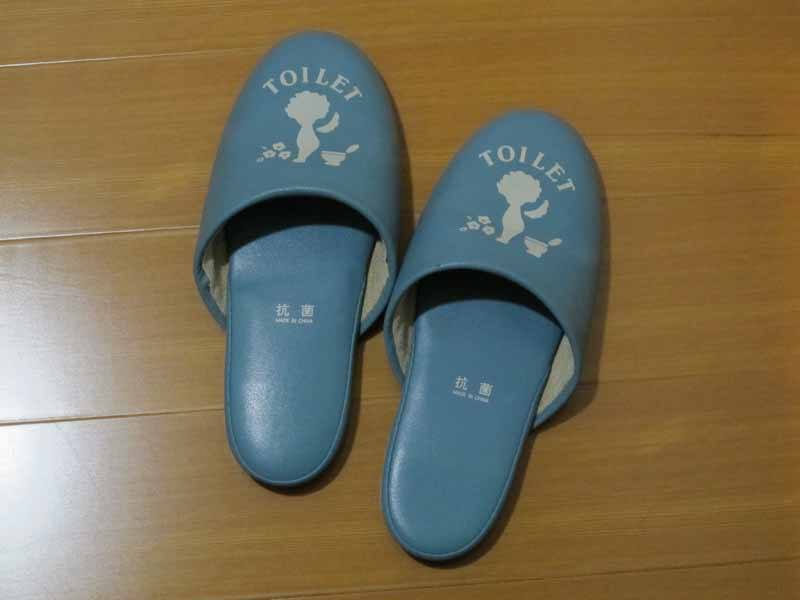
2) Understand the onsen (Japanese hot springs)
Bathing in an onsen (a hot spring bath), is one of our favourite pastimes, never mind it being a Japanese custom. It has such an extensive etiquette that we’ve devoted a whole post about how to onsen like a local. Unlike some Japanese customs, those regarding onsen make perfect sense, so they’re not too difficult to remember.
The most important thing to know is that you must be naked to bathe in Japanese hot springs (no swimming costumes or trunks) and that you must wash yourself thoroughly in the showers provided before you get into the bath.
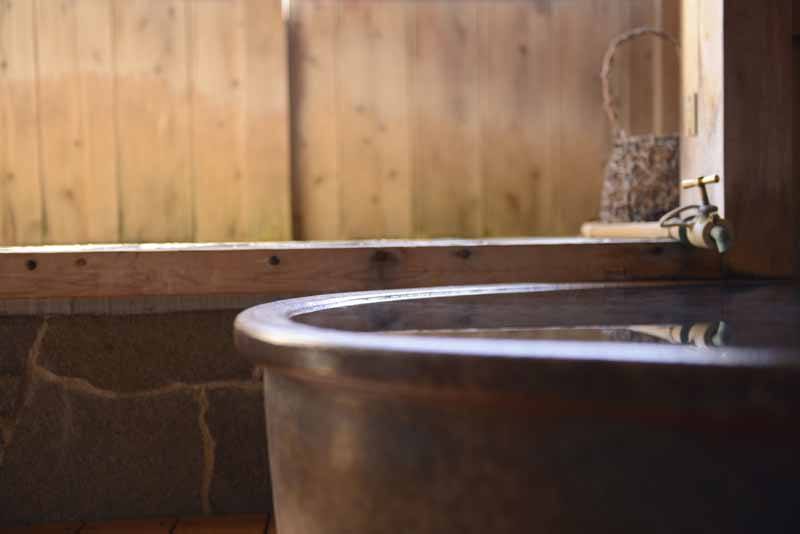
3) Bow
Japanese people are world-famous for bowing, and you will see it everywhere you go. Don’t worry too much about doing it yourself, but a small bow or nod of the head can be useful to express thanks or apology.
Bows are both a greeting and a term of endearment; for thanks and an apology — they have their own perplexing etiquette that very few truly understand.
In the simplest terms, the depth and duration of the bow are directly proportional to the depth of feeling being expressed. Spilt sake down someone’s back? A deep bow will show how remorseful you are. Deeper bows tend to be more formal, while a shallower bow is informal. Some bows require a bow in response, leading to endless exchanges of progressively shallower bows as each party backs away (sometimes, amusingly, into other objects or people). An inferior will bow more deeply and often than their superior, and so on. Bowing right is a surefire way to adhere to Japanese etiquette.
Luckily most Japanese people will just shake hands when dealing with a foreigner, so you don’t really need to worry about it too much. But, learning to bow is a skill worth pursuing to truly feel like you’re on the same page as everyone else.
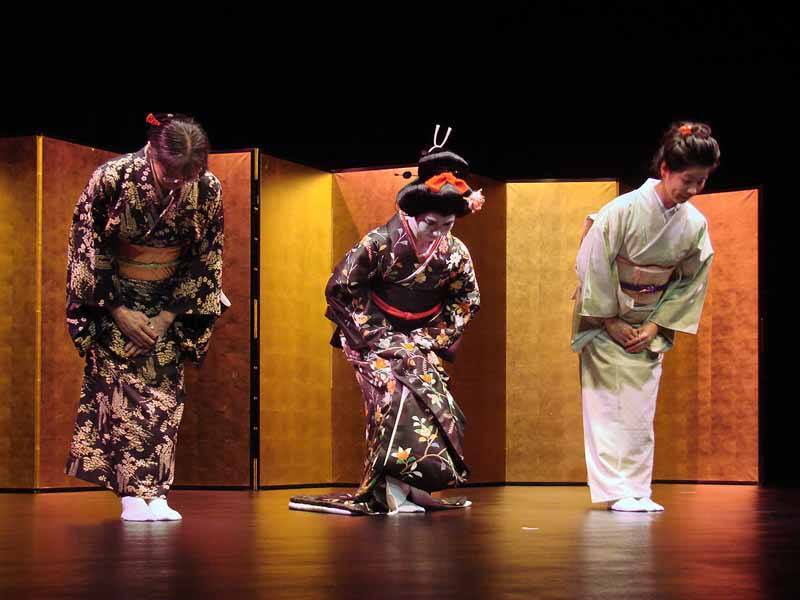
4) Don’t blow your nose in public
While in Western countries it is generally rude not to blow your nose (or at least to not let snot run down your face), for good Japanese manners, the reverse is true. Blowing your nose in public is frowned upon, and most people will just keep sniffing instead. It is especially rude to blow your nose at the table — so take heed!
5) Japanese manners at table
Whilst proper table manners are slowly dying out in the West, they’re still vitally important in Japan. They’re especially important if you get invited to dinner by your new Japanese friends when you’re out and about and enjoying the amazing food Japan has to offer.
Firstly, noisily slurping your noodles or soup is actively encouraged and is considered a sign of appreciation for your meal. Picking up your bowl to drink the contents or eat the last few scraps is also perfectly acceptable. You should also avoid pouring soy sauce on white rice, burping at the table, or refilling your own glass (you should, however, fill the glasses of your companions when you see that they are empty).
As if things weren’t already tricky enough, the use of chopsticks has its own complicated set of rules. Here are some do’s and don’ts:
- Don’t use your chopsticks to pass food to another person (when eating sushi for example)
- Don’t use the “wrong” end of your chopsticks to take food from a communal dish
- Never stand your chopsticks upright in a rice bowl
- Don’t rub your chopsticks together
- Use the chopstick rest (if there is one)
Also — walking and eating is considered bad manners, as appreciating your food means taking your time and enjoying it. This means not immediately eating anything you got from a Japanese vending machine, and waiting for a quiet spot to sit down outside of the train station to enjoy your snack.
You may think that walking and eating is considered rude because of the likelihood of making mess, but it’s actually about concentrating on your meal and enjoying it. As non-Japanese people, we’re used to being more on-the-go with how we eat, so this can take some adjusting to. — Will G, Travel Consultant
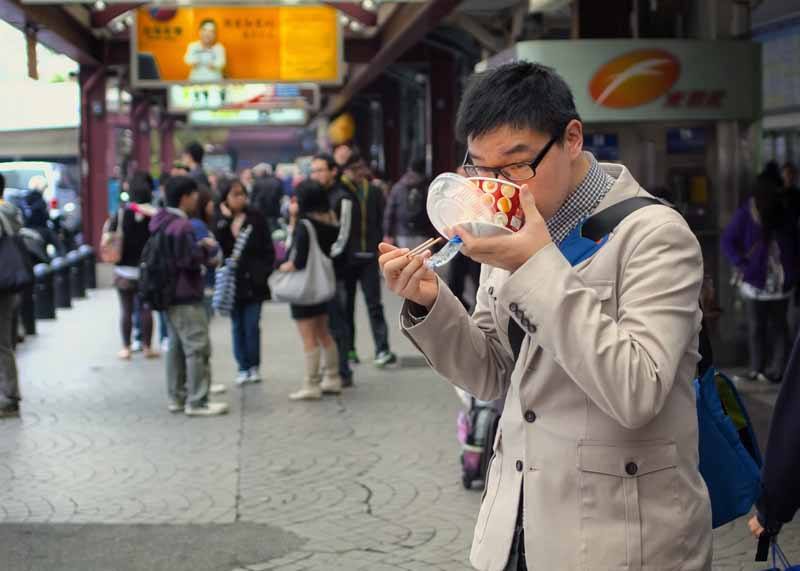
6) Tipping isn’t common
Tipping isn’t commonplace in Japan, and if you do leave a tip in restaurants or bars, you may find that the server will come running after you to return your “forgotten” change. If you have a guided experience or tour, though, and feel your guide has done a particularly fantastic job, tipping may be right.
You may notice that next to a cash register, there is a small tray by the till. This is so you can place money down rather than handing it directly to the cashier, so make sure you use it whenever you see one.
7) Be punctual
Being “fashionably late” is not a thing in Japan (sorry cool kids) so if you have arranged to be at a certain place at a certain time, you will be expected to turn up at that time.
This is particularly true at mealtimes in traditional Japanese inns (called ryokan), where great time and effort go into food preparation and presentation. Here, it is insulting to your host to skip a meal or to turn up later than expected, although they will never tell you so directly.
Of course, if you get lost on the way to an appointment or reservation, a certain amount of leeway will always be allowed. This is where practicing your ‘apology bow’ really comes in.
8) Be quiet on public transport
Trains and buses are deliberately relaxing in Japan, as their work-heavy culture of long hours and late nights requires many to spend lots of time on public transport and at train stations. As such, noise is kept to a minimum to allow people time and space to breathe. If you’re being noisy, be prepared for some uncomfortable glances.
9) Keep hold of your rubbish
Nobody likes litter, and Japanese people are no exception. The streets of cities like Tokyo or Kyoto are immaculate despite their size. To keep it that way, everyone tidies up their own rubbish rather than using communal bins like Westerners do. At first, this can seem jarring and odd, but once you get used to it, you’ll be bagging your detritus up just like a local Japanese person.
10) Greetings
Greetings are incredibly important in Japanese culture. There are separate set greetings for almost every situation you could possibly imagine. Entering a room, leaving a room, leaving your house, returning to your house, welcoming somebody else home, bumping into a colleague, beginning a meal, finishing a meal… the list goes on.
Unless you speak Japanese, you don’t need to worry about learn all the various greetings. The only ones you’ll need are “Konnichiwa” (hello) and “sayonara” (goodbye)! And, as always, a smile and a willingness to give it a go, will go a long way. If you’re on a tour, ask your guide for a unique greeting you can try in your next trip to Japan.
Ready to think about visiting Japan after reading through our Japanese etiquette tips? Why not speak to one of our travel experts to get an itinerary for your trip to Japan.


